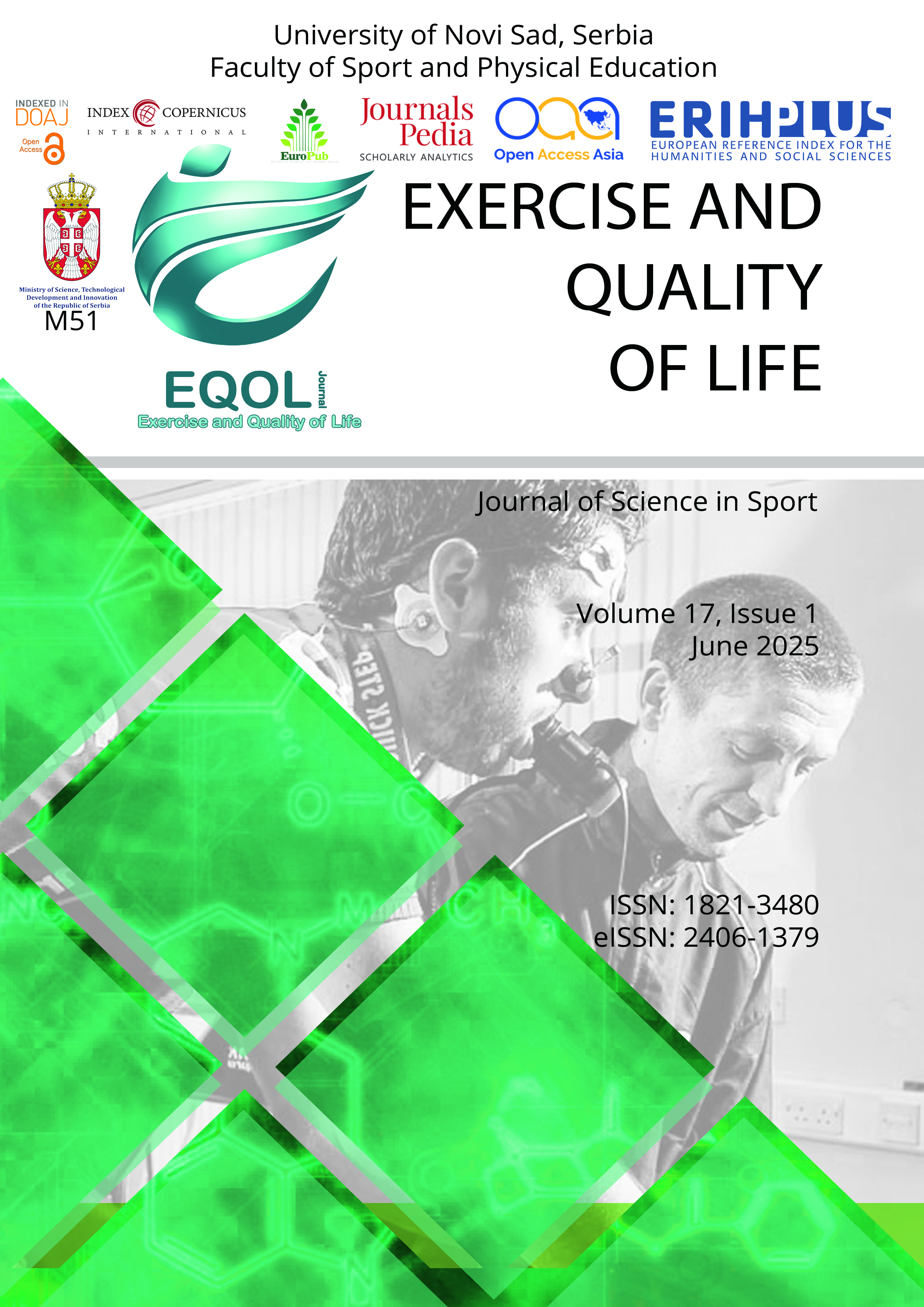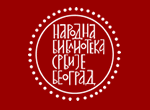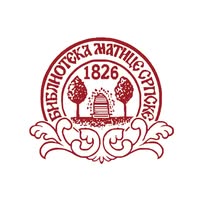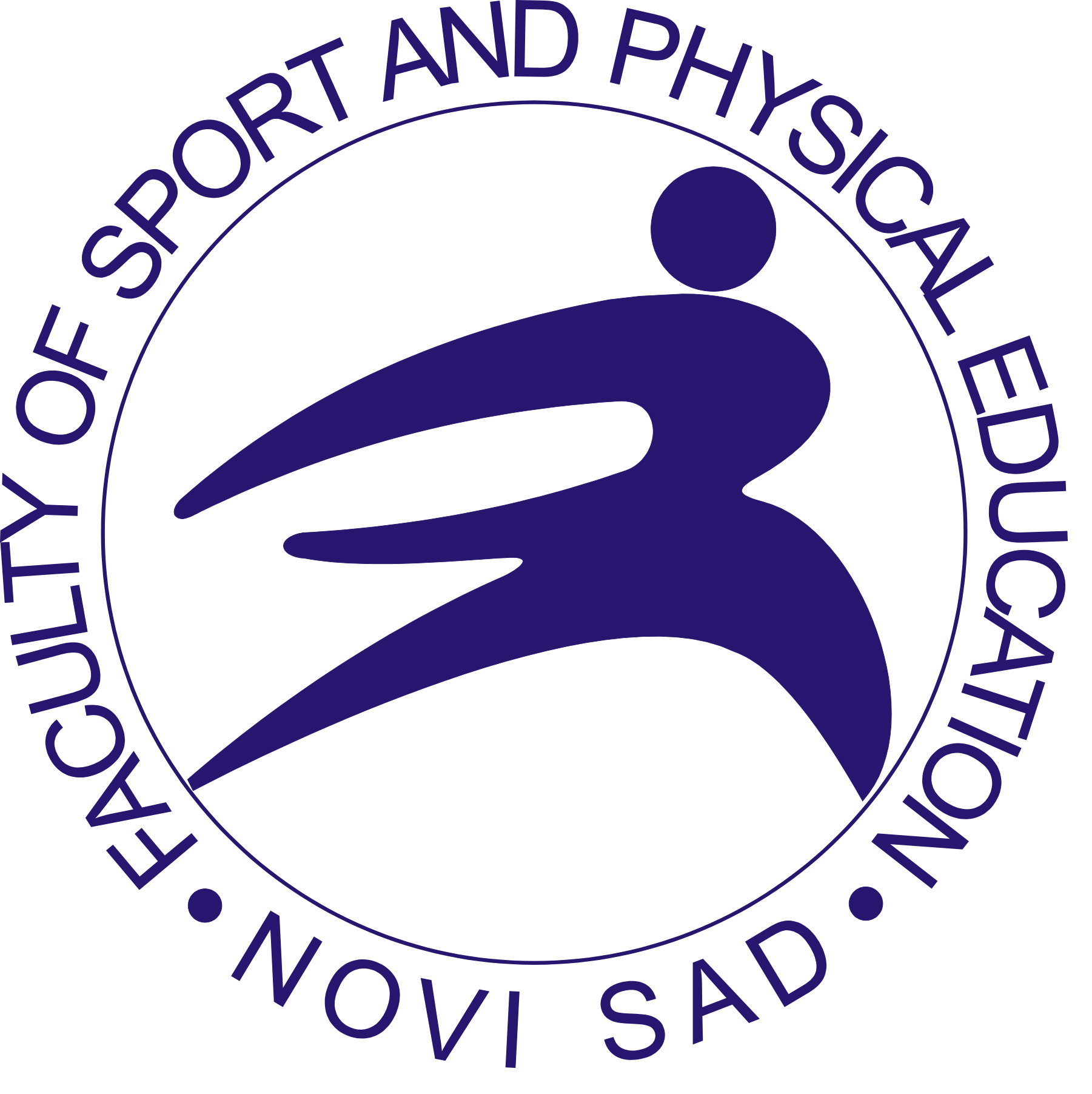Current issue

Volume 17, Issue 1, 2025
Online ISSN: 2406-1379
ISSN: 1821-3480
Volume 17 , Issue 1, (2025)
Published: 15.06.2025.
Open Access
All issues
Contents
14.06.2022.
Original scientific paper
The effects of corrective gymnastics on the postural status of the spine in the frontal plane in preschool children
Postural irregularities, i.e., deviations from normal posture, are a growing problem today. Physical inactivity in preschool children can lead to some physiological changes, which, if not remedied timely, tend to more seriously impair health in later stages of life. Muscle activity caused by biomechanical adaptation to certain body positions in a sedentary regime in children can form muscle asymmetries. The study aimed to determine the effects of corrective gymnastics on the postural status of the spine in the frontal plane in preschool children. The total sample of children (n=133; AGE: 6.2±0.6) was divided into three sub-samples: experimental group E1 – 45 (25.57%), experimental group with additional exercises E2 – 45 (25.57%) and control group C-43 (48.86%). This is a longitudinal-type study that involved the application of a ten-week corrective gymnastics intervention on children aged 5 to 7 from Subotica, who participated in the formation of the sample. Based on the analysis of the results of the multivariate analysis of variance it can be concluded that there are no statistically significant differences (P=0.17) between the subjects from the experimental groups and the control group in the variables used for assessment of the spinal column in the frontal plane, and it is necessary to extend the treatment time in preschool children when corrective gymnastics is applied to changes in postural status when it is observed in the frontal plane.
Aleksandar Miletić, Zoran Milić, Dejan Savićević, Darijan Ujsasi
15.12.2018.
Original scientific paper
Inclusion of preschool children into organized activity in leisure time
All physical activity of preschool children during the day occurs while they are in kindergarten or during their leisure time. The aim of the study was to present the results related to the participation of children in organized activities during leisure time and what is the perception of parents about the scope of their children's physical activity and the time spent on watching TV, using computers and playing video games (as a part of wider study). The research was conducted in 2017 in the Preschool institution “Naša Radost” in Subotica. The survey questionnaire was filled in by 135 parents for children of the average age of 5.14 years (±0.91). The survey questionnaire contained questions about children's nutrition (NutriStep survey) and their involvement in organized activities with educational and sports-recreational content during leisure time, as well as parent’s opinion on quantity in child’s sedentary activities. 65.9% of children aged 5 to 7 was found to attend some kind of organized activity, most often within programs of foreign language schools, sports schools and programs with aesthetic presentation of skills is important (ballet, dance and folklore). The largest number of parents reported that their child spent one hour watching TV, using a computer or playing games. About 71% of parents reported that their child was physically active enough. In both cases, a statistically significant difference was found between boys and girls. Within the family circle and within the educational institution, where children spend most of the time, it is necessary to provide conditions for undisturbed growth and development. One of the best ways is through exercising physical activity.
Milenko Janković, Karolina Berenji, Zoran Milić, Sandra Vujkov























